#Prince Christian of Schleswig-Holstein
Photo
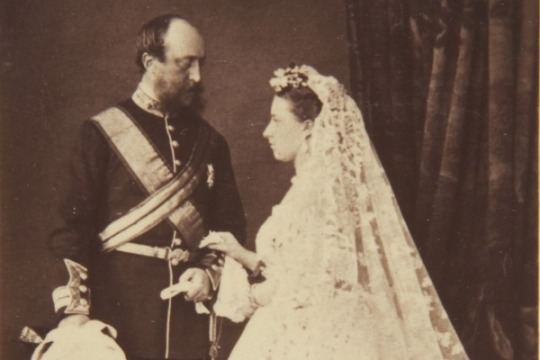
The Marriage of Princess Helena
The marriage of her Royal highness Princess Helena to Prince Christian of Schleswig-Holstein took place on Thursday, in the presence of her Majesty the Queen, their Majesties the King and Queen of the Belgians, the members of the English Royal family and a select congregation of the aristocracy, in the private chapel of Windsor Castle.
Princess Helena Augusta Victoria, fifth child of Queen Victoria and of the lamented Prince Consort, was born on the 25th of May, 1846, and is therefore in her twenty-first year. It has been mentioned in Parliament by one of her Majesty's Ministers, and it may therefore, without impropriety, be recorded here, that the widowed Queen has experienced, in the tender and dutiful attentions of this daughter, one of the greatest sources of consolation during her late bereavement.
Prince Frederick Christian Charles Augustus is a younger son of the late Duke Christian Charles Frederick Augustus of Schleswig-Holstein (who ceded his duchy to Denmark) and brother to Prince Frederick Christian Augustus the eldest son, whose claims to the sovereignty of the duchy, as against, the King of Denmark, were made the pretext, for the late war on the part of the German Powers. Prince Christian, as the younger son is usually called, was born on the 22nd of January, 1831, his mother being Louisa Sophia, Countess Danneskiold-Samsøe, a Danish lady married, in 1828, to the late Duke of Schleswig-Holstein-Sonderburg-Augustenburg, and its lineage is collateral with that of the reigning families of Denmark and Russia. Prince Christian has held commission in the Prussian army. By the express offer of her Majesty, he will henceforth be addressed with the style of Royal Highness.
The small private chapel of Windsor Castle is situated almost in the centre of the Queen's private apartments. Its limited dimensions were, under the direction of the Lord Chamberlain and the Hon. Spencer Ponsonby, made the most of. The seats of pews in the centre were removed, chairs placed on each side, and temporary gallery erected for the commendation of the invited guests. A rich Wilton carpet covered the aisle leading up to the altar.
Soon after eleven o'clock the King and Queen of the Belgians, the Duchess of Cambridge, the Prince and Princess Leiningen, the Duke of Edinburgh, Prince Arthur, and other relatives of the Royal family, were, upon leaving their different apartments conducted to the state drawing-room, which is also called the Zuccarelli Room. From its containing a number of paintings by that artist. The ceiling oof this magnificent room is a richly embellished stucco. In the centre of the cove are elaborately emblazoned shields containing the arms of England and Saxe-Meiningen, the whole being surmounted by the Royal crown, which with other shields scrolls, and wreaths of flowers, complete the decoration. The Prince and Princess of Wales soon afterwards joined this distinguished assemblage where they remained till summoned to the chapel. In the Red Drawingroom, or Rubens' Room, in which the body of George IV lay in state , was assembled the Diplomatic Body; while the general visitors assembled in what is known as the White Drawing-room. Her Majesty's private band played in the Red Drawing-room. About twelve o'clock the Archbishop of Canterbury, the Bishops of London and Winchester, and the Very Rev. the Dean of Windsor arrived.
In the course of the ceremony several pieces of music were performed by the choir of St. George's Chapel, led by Dr. Elvey, and including Messrs. Adams, Dyson, Baraby, Tolley, Bridgewater, Knowles, Mitchell, Hurst, Marriott, Bransome, and Briggs, with the choir of the private chapel.
The following is a list of the bridesmaids whore were in attendance on the Princess: – Lady Caroline Gordon Lennox, Lady Margaret Scott, Lady Albertha Hamilton, Lady Laura Phipps, Lady Alexandrina Murray, Lady Mary Fitzwilliam, Lady Ernestine Edgecombe, and Lady Muriel Campbell. These ladies are the daughters of Dukes, Marquises, or Earls.
Her Majesty – who was dressed in black, relieved with silver trimmings, and who wore a coronet – gave the Princess away. After the ceremony the Princess, who appeared nearly moved to tears, turned round and affectionately embraced her mother. The ceremony terminated exactly at a quarter past one.
The Illustrated London News July 7, 1866
4 notes
·
View notes
Text

#Prince Christian of Schleswig-Holstein#Princess Helena#1860s#portrait#Great Britain#Schleswig-Holstein#colorization#victorian
0 notes
Text
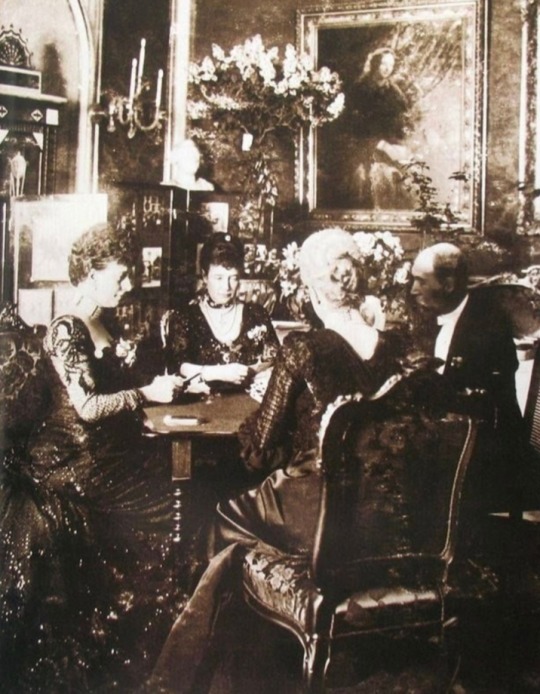


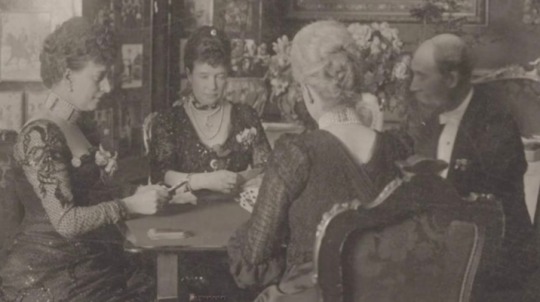
Queen Alexandra of the United Kingdom, Empress Maria Feodorovna of Russia, Princess Thyra, and their father King Christian IX of Denmark playing cards.
—
Alexandra of Denmark (Alexandra Caroline Marie Charlotte Louise Julia; 1 December 1844 – 20 November 1925) was Queen of the United Kingdom and the British Dominions, and Empress of India from 22 January 1901 to 6 May 1910 as the wife of King-Emperor Edward VII.
—
Maria Feodorovna (26 November 1847 – 13 October 1928), known before her marriage as Princess Dagmar of Denmark, was Empress of Russia from 1881 to 1894 as the wife of Emperor Alexander III.
She was the second daughter of Christian IX of Denmark and Louise of Hesse-Kassel.
Maria's eldest son became the last Russian monarch, Emperor Nicholas II.
Maria lived for 10 years after Bolshevik functionaries murdered Nicholas and his immediate family in 1918.
—
Princess Thyra of Denmark (Thyra Amalie Caroline Charlotte Anna; 29 September 1853 – 26 February 1933) was the youngest daughter and fifth child of Christian IX of Denmark and Louise of Hesse-Kassel.
In 1878, she married Ernest Augustus, the exiled heir to the Kingdom of Hanover.
As the Kingdom of Hanover had been annexed by Prussia in 1866, she spent most of her life in exile with her husband in Austria.
—
Christian IX (8 April 1818 – 29 January 1906) was King of Denmark from 15 November 1863 until his death in 1906.
From 1863 to 1864, he was concurrently Duke of Schleswig, Holstein and Lauenburg.
#Alexandra of Denmark#Queen Alexandra of the United Kingdom#Empress Maria Feodorovna of Russia#Princess Dagmar of Denmark#Princess Thyra of Denmark#King Christian IX of Denmark#Prince Christian of Schleswig-Holstein-Sonderburg-Beck#House of Glücksburg#House of Hesse#House of Romanov#House of Hanover#British Royal Family#Danish Royal Family#Russian Royal Family
7 notes
·
View notes
Photo

Prince Christian of Schleswig-Holstein (1831-1917), Queen Victoria's son in law married with Princess Helena. By Franz Xaver Winterhalter.
#franz xaver winterhalter#uk#german aristocracy#prince christian of schleswig holstein#haus oldenburg#house of schleswig-holstein#slesvig holsten sønderborg augustenborg#british aristocracy
19 notes
·
View notes
Text
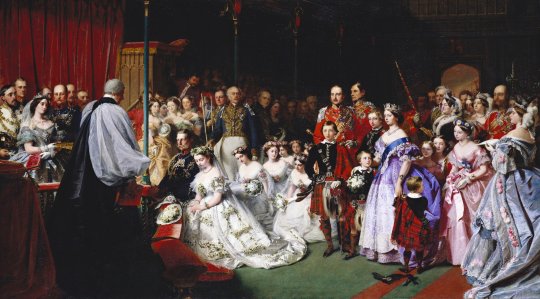

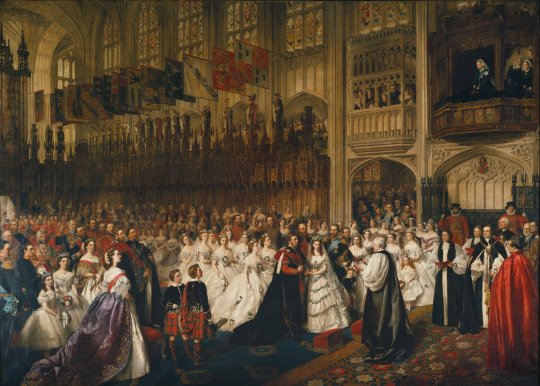



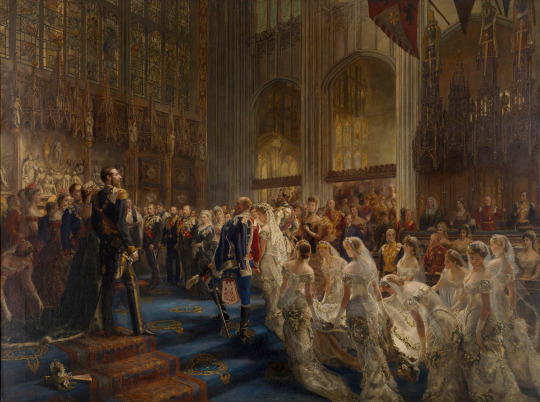
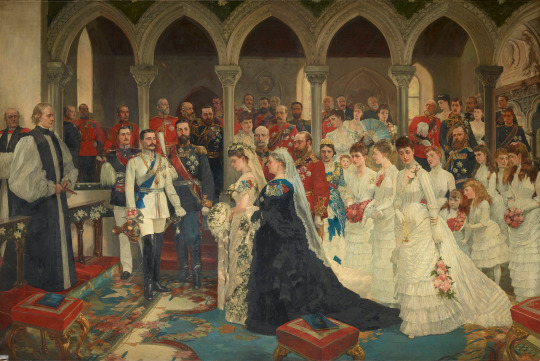

Wedding Portraits of Queen Victoria and Prince Albert’s children (9 of 10) and their respective spouses, 1858 - 1885.
Victoria, Princess Royal (eldest daughter) married Prince Frederick William of Prussia (later German Emperor Frederick III and Empress Victoria) on January 25, 1858. Portrait by John Phillip.
Princess Alice (second daughter) married Louis IV, Grand Duke of Hesse and by the Rhine on July 1, 1862. Portrait by William Powell Frith.
Albert Edward, Prince of Wales married Princess Alexandra of Denmark (later King Edward VII and Queen Alexandra) on March 10, 1863. Portrait by Franz Xaver Winterhalter.
Princess Helena (third daughter) married Prince Christian of Schleswig-Holstein on July 5, 1866. Portrait by Christian Karl Magnussen.
Princess Louise (fourth daughter) married John Campbell, 9th Duke of Argyll on March 21, 1871. Portrait by Sydney Prior Hall.
Prince Alfred, Duke of Edinburgh and of Saxe-Coburg and Gotha married Grand Duchess Maria Alexandrovna of Russia on January 23, 1874. Portrait by Nicholas Chevalier.
Prince Arthur, Duke of Connaught and Strathearn (third son) married Princess Louise Margaret of Prussia on March 13, 1879. Portrait by Sydney Prior Hall.
Prince Leopold, Duke of Albany (fourth son) married Princess Helena of Waldeck and Pyrmont on April 27, 1882. Portrait by Sir James Dromgole Linton.
Princess Beatrice (youngest daughter) married Prince Henry of Battenberg on July 23, 1885. Portrait by Richard Catton Woodville.
#british royal family#ktd#brf#queen victoria#art#art history#prince albert#hopefully#i got them all right lol
36 notes
·
View notes
Text


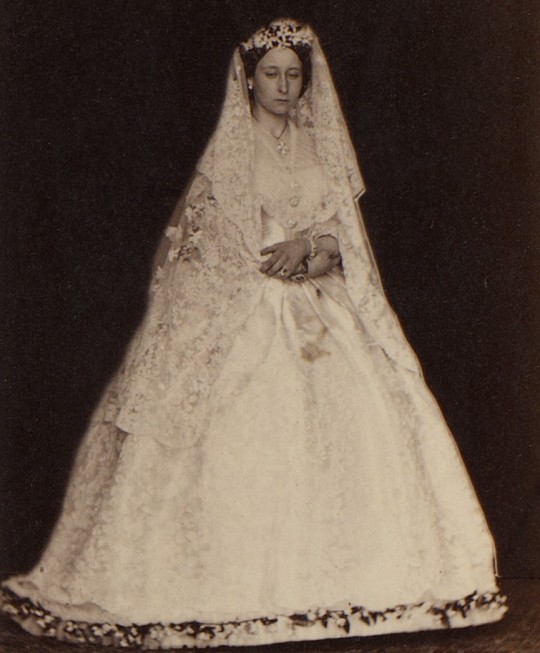

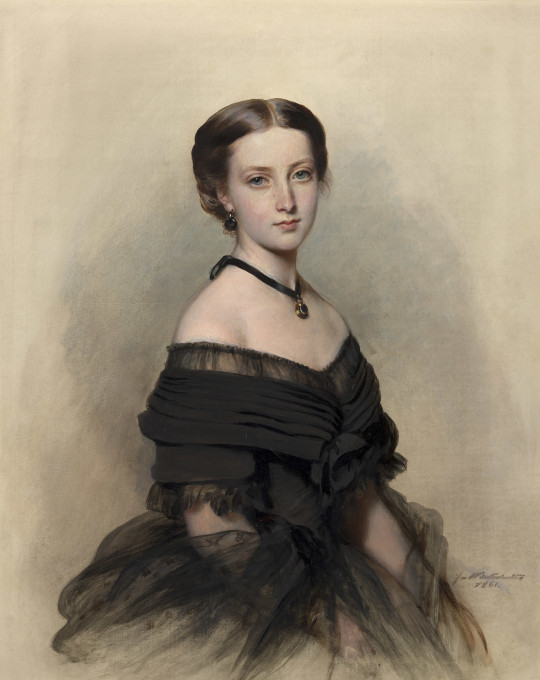





Portrait Versus Photograph
Queen Victoria's Daughters
Vicky (1840-1901), married Frederick, future Emperor of Germany. She had four sons, including Wilhelm II of Germany, and four daughters, including Queen Sophia of Greece.
Alice (1843-1878), married Louis IV, Grand Duke of Hesse and by the Rhine. She had two sons and five daughters, including Empress Alexandra of Russia.
Helena (1846-1923), married Prince Christian of Schleswig-Holstein. She had four sons and two daughters.
Louise (1848-1939), married John Cambell, future Duke of Argyll. She had no children.
Beatrice (1857-1944), married Prince Henry of Battenberg. She had three sons and one daughter, including Queen Victoria Eugenie of Spain.
#me in a totally normal way: LOUISE!!!! VICKY!!!! I LOVE YOU!!!!!!!!!!!!!#anyway#monarchy#history#Empress Victoria Princess Royal#Grand Duchess Alice of Hesse and by Rhine#Princess Helena of Schleswig-Holstein#Princess Louise Duchess of Argyll#Princess Beatrice of Battenberg#I always love pics of Helena because she genuinely always looks like she's about to deck someone#i could do one for the boys but i'm also like nahhhhhhhhhh#the girls are very good at letting you trace fashion changes due to there being 17 years between Vicky and Bea
5 notes
·
View notes
Note
Is it true that Alix called Princess Helen a sniper because of her long nose?
Alix has long nose too That was mean of her 😞
Princess Helena Victoria of Schleswig-Holstein was known by her family as "Thora" and sometimes "Snipe" in reference to her sharp facial features & long nose.
The Princess of Wales(Alexandra), still unforgiving on the Schelwig-Holstein affair, wrote about this to her son, Prince George: "So the Christians have been following you about with their lovely Snipe!"
Considered as a potential bride for the future George V, son of the future King Edward VII and Queen Alexandra, Thora was easily shrugged off because Alexandra did not approve of the possible union. She had grown to detest the Augustenbergs because of the wars between Denmark and Prussia over Schleswig-Holstein, where Alexandra’s homeland lost the battles. Poor Thora ended up enduring her vile remarks.
“Well, it would be a pleasure to welcome that ‘beauty’ as your bride.” the then-Princess of Wales mockingly said of Helena Victoria in a letter she wrote to her son. Thora, in the end, stood as one of the bridesmaids at the wedding of George and Mary of Teck in July of 1893.
My thoughts on this:
I do think that it was mean of Alix to call her "snipe" because she & Helena Victoria both had long noses & sharp facial features!
I also do think that it was very rude of Alix to be rude towards Helena Victoria because she had nothing to do with the Schleswig-Holstein affair because she wasn't even alive when it had happened.
I mean I really really love you Alix... But that was very mean! 😞💔 I can also understand that she didn't want Georgie to have someone that she didn't like marry into the family, but those words she said were very foul! :(
#answered ask#princess helena victoria of schleswig-holstein#thora#queen alexandra#alexandra of denmark
17 notes
·
View notes
Text
Deutschribing Germany
Landmarks
Germany is the third country in the world with the highest number of World Heritage Sites: fifty-one in total, of which forty-eight are cultural and three are natural.

Aachen Cathedral
The Aachen Cathedral is a Roman Catholic church in Aachen, North Rhine-Westphalia. It is one of the oldest cathedrals in Europe and was consecrated in 805. Emperor Charlemagne was buried there.
The cathedral has two distinct architectural styles and small portions of a third. The core is Carolingian-Romanesque, the choir was constructed in the Gothic style, and the area around the throne is Ottonian.
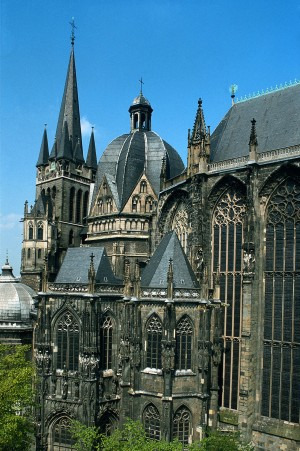
Abbey and Altenmünster of Lorsch
The Lorsch Abbey is a former imperial abbey in Lorsch, Hesse. It was founded in 764 and was one of the most renowned monasteries of the Carolingian Empire. Although in a ruined state nowadays, its remains are among the most important pre-Romanesque-Carolingian style.
The abbey combines the Roman triumphal arch (arch-shaped passageways and half-columns) with the vernacular Teutonic heritage (baseless triangles of the blind arcade and polychromatic masonry).

Ancient and Primeval Beech Forests of the Carpathians and Other Regions of Europe
The Ancient and Primeval Beech Forests of the Carpathians and Other Regions of Europe is a transnational serial nature site that includes forests in Albania, Austria, Belgium, Bulgaria, Croatia, Germany, Italy, Romania, Slovakia, Slovenia, Spain, and Ukraine.
It encompasses 94 forests of European beech, which in many cases have grown without interference since the last ice age. Those in Germany are located in Brandenburg, Hesse, Mecklenburg-Vorpommern, and Thuringia.

Archaeological Border complex of Hedeby and the Danevirke
Hedeby was an important Danish Viking Age trading settlement between the 8th and 11th centuries, now in Busdorf, Schleswig-Holstein. It was rediscovered in the late 19th century.
The Danevirke or Danework is a system of Danish fortifications in Schleswig-Holstein initiated in 650 and expanded during the Viking Age and High Middle Ages.

Bauhaus and its Sites in Weimar, Dessau and Bernau
Bauhaus and its Sites in Weimar, Thurngia; Dessau-Roßlau, Saxony-Anhalt, and Bernau bei Berlin, Brandenburg, comprises six separate sites associated with the Bauhaus art school, which was in operation between 1919 and 1933.
The buildings are fundamental representatives of Classical Modernism and Art Nouveau. Some of them were built as social housing, others operated as schools, and the rest of them were residential buildings.

Bergpark Wilhelmshöhe
Bergpark Wilhelmshöhe is a landscape park in Kassel, Hesse. It is the largest European hillside park and the second-largest park on a hill slope in the world. Construction began in 1689 and lasted 150 years.
The park has Baroque buildings and unique fountains and water features. At the summit stands the Hercules monument, a 40-meter-high pyramid with an 8.5 meter bronze statue of Hercules.

Berlin Modernist Housing Estates
The Berlin Modernist Housing Estates site comprises six separate subsidized housing estates in Berlin. It dates from the Weimar Republic (1919-1933).
The estates are examples of the building reform movement that contributed to improving housing and living conditions of people and also provide exceptional examples of new urban and architectural typologies, as well as technical and aesthetic innovations.

Carolingian Westwork and Civitas Corvey
The Princely Abbey of Corvey is a former Benedictine abbey consecrated in 844 and located in Höxter, North Rhine-Westphalia. It was one of the self-ruling princely abbeys of the Holy Roman Empire.
An example of Carolingian architecture, it is the oldest surviving example of a westwork, whose inside contains the only known wall paintings of ancient mythology with Christian interpretation in Carolingian times.

Castles of Augustusburg and Falkenlust at Brühl
The Ausgustusburg and Falkenlust Palaces form a historical building complex in Brühl, North Rhine-Westphalia. The buildings are connected by the spacious gardens of the Schlosspark.
Built in the early 18th century, the palaces and gardens are masterpieces of early Rococo architecture. They are now used as a venue for concerts.

Caves and Ice Age Art in the Swabian Jura
The Caves and Ice Age Art in the Swabian Jura are a collection of six caves in the Swabian Alps, in Baden-Württemberg, which were used by Ice Age humans for shelter about 33,000 to 43,000 years ago.
Within the caves were found the oldest non-stationary works of human art in the form of carved animal and humanoid figurines, in addition to the oldest musical instruments ever found.

Classical Weimar
Classical Weimar consists of eleven sites in and around Weimar, Thuringia. The city was a cultural center of the Enlightenment during the 18th and 19th centuries, where many notable writers and philosophers, including Christoph Martin Wieland, Friedrich Schiller, John Gottfried Herder, and Johann Wolfgang von Goethe, lived and participated in the Weimar Classicism movement.
It includes the church of St. Peter and Paul, Duchess Anna Amalia Library, Goethe's house, Herders residence, the historical cemetery, Park an der Ilm, Schiller's house, Schloss Belvedere, Schloss Ettersburg, Schloss Weimar, Tiefurt House, Wilhelm-Ernst-Gymnasium, and Wittumspalais.

Collegiate Church, Castle, and Old Town of Quedlinburg
Quedlinburg was an influential and prosperous trading center during the early Middles Ages and a center of influence under the Ottonian dynasty.
Quedlinburg Abbey was a house of secular canonesses in Quedlinburg, Saxony-Anhalt. It was founded in 936 on the initiative of Saint Mathilda, the widow of King Henry the Fowler, as his memorial. The castle, abbey, church, and surrounding buildings are masterpieces of Romanesque architecture.

Cologne Cathedral
The Cologne Cathedral is a Catholic cathedral in Cologne, North Rhine-Westphalia. Construction began in 1248 but was halted in 1560; the cathedral was not completed until 1880.
It is a renowned monument of Gothic architecture and the largest Gothic church in Northern Europe, with the second-tallest spires. It is also the third-tallest church in the world.

Darmstadt Artists' Colony Mathildenhöhe
The Darmstadt Artists' Colony refers to a group of Jugendstil artists as well as to the buildings in Mathildenhöhe in Darmstadt, Hesse, where the artists lived in the 19th and 20th centuries.

They were financed by patrons and worked together with other members of the group with similar artistic tastes.
Erzgebirge/Krušnohoří Mining Region
The Ore Mountains—Erzgebirge in German and Krušnohoří in Czech—lie along the Czech-German border in Bohemia and Saxony, respectively, and the site is shared between the Czech Republic and Germany.

The region was the setting of the earliest stages of the early transformation of mining and metallurgy from a craft to a large-scale industry. As a result, mining directly shaped the landscape and the habitats of plants and animals.
Fagus Factory in Alfeld
The Fagus Factory is a shoe last factory in Alfeld on the Leine, Lower Saxony. It is an important example of early modern architecture.

The factory was commissioned by Carl Benscheidt, who wanted a radical structure that expressed the company's break from the past. It was built between 1911 and 1913.
Frontiers of the Roman Empire
Limes is the term used to refer to the Germanic border defense or delimiting system marking the borders of the Roman Empire and separating the empire from the unsubdued Germanic tribes between the years 83 and 260.
The Limes Germanicus are the fortifications that bounded the ancient Roman provinces of Germania Inferior, Germania Superior, and Raetia, in modern-day southwestern North Rhine-Westphalia and southwestern and southern Germany. Their total length was 568 km, and they included sixty forts and 900 watchtowers.
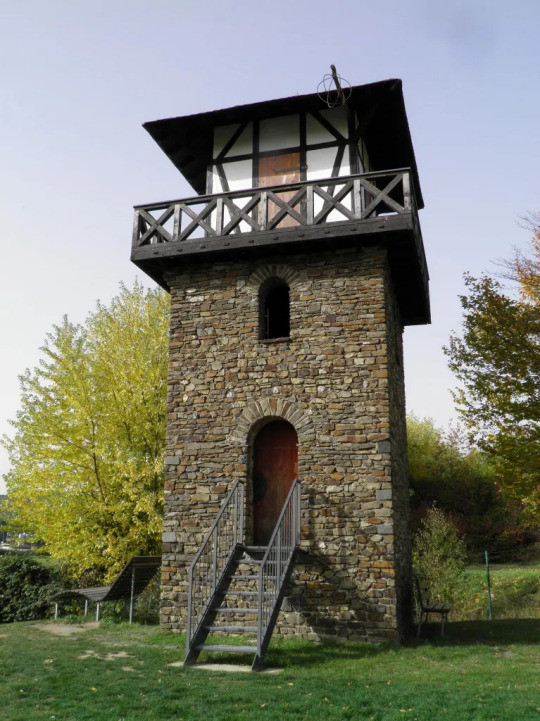
Frontiers of the Roman Empire in Bavaria
The Danubian Limes refers to the Roman military frontier along the Danube in Bavaria, as well as Austria, Bulgaria, Croatia, Hungary, Romania, Serbia, and Slovakia.
The border was reinforced with watchtowers, legion camps, and forts built around the first century. A Roman road, the Danube Way, was laid along the limes.

Garden Kingdom of Dessau-Wörlitz
The Dessau-Wörlitz Garden Realm is a cultural landscape between Dessau and Wörlitz in Saxony-Anhalt. It was created in the late 18th century and is one of the largest English parks in continental Europe.

It was designated as a world heritage site because of its exceptional landscape design and testimony to the ideals of the Enlightenment Age.
Great Spa Towns of Europe
The Great Spa Towns of Europe is a transnational site that includes eleven spa towns across several European countries, namely, Austria, Belgium, Czech Republic, France, Germany, Italy, and the United Kingdom.
Those in Germany are Bad Ems, Rhineland-Palatinate; Baden-Baden, Baden-Württemberg, and Bad Kissingen, Bavaria. All the spa towns were developed around natural mineral water springs.

Hanseatic City of Lübeck
The Hanseatic City of Lübeck, located in Schleswig-Holstein, is the second-largest city on the German Baltic coast. It was founded before 819 by Polabian Slavs and became the cradle and capital city of the Hanseatic League.
Nicknamed the "City of Seven Towers", its historic old town includes five Protestant churches with seven towers: the Lübeck Cathedral, St. Giles's, St. Jacob's, St. Mary's, and St. Peter's, as well as the Burgkloster, the Koberg site, the town hall, and the market square.

Historic Centers of Stralsund and Wismar
The Hanseatic City of Stralsund is located in Mecklenburg-Western Pomerania and is the oldest city in Pomerania. The Strelasund Crossing connects the city with Rügen, the largest island of Germany. Its old town was inscribed as a UNESCO World Heritage Site alongside Wismar because of its Brick Gothic buildings and importance in the Hanseatic League.
The Hanseatic City of Wismar is also located in Mecklenburg-Western Pomerania. Its historical old town includes the churches of St. George's, St. Mary's, and St. Nicholas's.
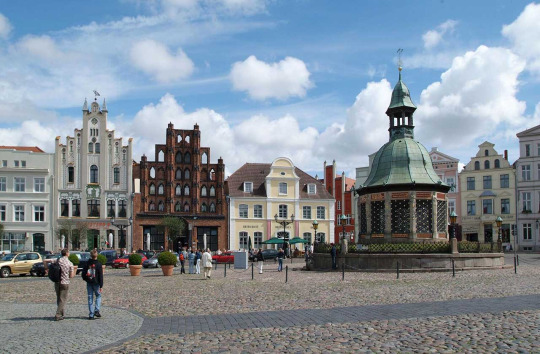
Luther Memorials in Eisleben and Wittenberg
Eisleben, in Saxony-Anhalt, was the hometown of Martin Luther, and he even preached his last sermon and died there. His Birth and Death houses are a UNESCO World Heritage Site. The town was first mentioned in the late 10th century.
Wittenberg is also famous for its close connection with Luther, as he lived in the Augustinian monastery. It was also one of the most powerful cities in the Holy Roman Empire as the seat of the Elector of Saxony.

Margravial Opera House Bayreuth
The Margravial Opera House is a Baroque opera house in Bayreuth, Bavaria. It was constructed according to the plans designed by the French architect who built the court of Hohenzollern margrave Frederick of Brandenburg-Bayreuth.
The façade was inspired by the Place Vendôme in Paris and has large Corinthian columns. A balustrade is stretched across the façade, with sculptures of Apollo, Minerva, and six Muses placed atop.

Maulbronn Monastery Complex
The Maulbronn Monastery is a former Cistercian abbey and ecclesiastical state in Maulbronn, Baden-Württemberg.

Founded in 1147, the complex is surrounded by turreted walls and a tower gate. Today it houses the town hall and a police station. The monastery contains an Evangelical seminary and a boarding school.
Messel Pit Fossil Site
The Messel pit is a quarry near Messel, in Hesse. Before it fell into disuse, bituminous shale was mined there. Besides its mineral significance, it also has significant geological and scientific importance due to the abundance of well-preserved fossils and diversity of plants and animals found there.

The site almost became a landfill, but strong local resistance stopped these plans and the site was declared a World Heritage Site. Since then, discoveries about the early evolution of mammals and birds are still being made.
Mines of Rammelsberg, Historic Town of Goslar and Upper Harz Water Management System
The Rammelsberg is a mountain south of Goslar, Lower Saxony, where an important silver, copper, and lead mine is located. Before its closure in 1988, it was the only mine still working continuously for over 1,000 years.
Goslar's political importance for the Holy Roman Empire and its testimony to the history of ore mining contributed to making them a UNESCO World Heritage Site. The Upper Harz Water Regale is a system of dams, reservoirs, and ditches built between the 16th and 19th centuries to store the water that drove the water wheels of the mines, including those in Rammelsberg.

Monastic Island of Reichenau
The Reichenau Island is located in Lake Constance, Baden-Württemberg. It is connected to the mainland by a causeway and a low road bridge.
In 724, the first monastery was built on the island, and Reichenau became an influential religious, cultural, and intellectual center. The Reichenau Abbey was one of the most significant monasteries in the Frankish Empire.

Museum Island, Berlin
The Museum Island in Berlin is a museum complex on the northern part of the Spree Island. It was built between 1830 and 1930 by order of the Prussian kings.
The island consists of the Altes Museum (old museum), Neues Museum (new museum), Alte Nationalgalerie (old national gallery), the Bode-Museum, and the Pergammonmuseum, as well as the Berlin Cathedral.
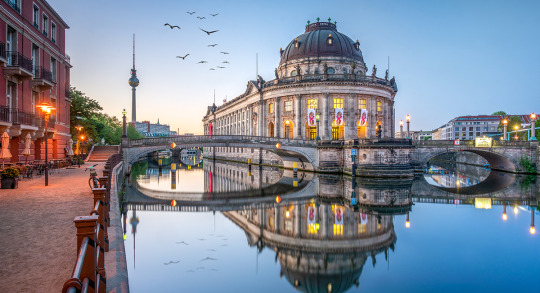
Muskauer Park/Park Mużakowski
The Muskau Park—Muskauer Park in German and Park Mużakowski in Polish—is a landscape park in Upper Lusatia, a region between Germany (Saxony) and Poland.
The site forms the largest English gardens in Central Europe and was laid out from 1815 onward. Its utopian design incorporates both native plants and the nearby town.
Naumburg Cathedral
The Naumburg Cathedral is located in Saxony-Anhalt. It dates from the 13th century and is a renowned landmark of the German Romanesque.
The west choir, the donor portrait statues of the twelve founders, and the rood screen are significant early Gothic monuments.
Old Town of Regensburg with Stadtamhof
Regensburg, in Bavaria, was an imperial Roman river fort and the political, economic, and cultural center of the surrounding region.
Its medieval center was made a World Heritage Site because of its well-preserved architecture, being the biggest medieval city north of the Alps, and historical importance for assemblies during the Holy Roman Empire.
Palaces and Parks of Potsdam and Berlin
The Palaces and Parks of Potsdam and Berlin site is a group of palace complexes and landscaped gardens in the Havelland region around Berlin and Potsdam.
Among others, the site includes the Palace and Park of Sanssouci, Neuer Garten (New Garden), Marmorpalais (Marble Palace), Cecilienhof Palace, Glienicke Palace, Park Glienicke, Nikolskoe log house, Pfaueninsel (Peacock Island), and Jagdschloß Glienicke (Glienicke hunting lodge).
Pilgrimage Church of Wies
The Pilgrimage Church of Wies is an oval Rococo church located in the foothills of the Alps in the town of Steingaden, Bavaria. It was built in the late 1740s by the Zimmermann brothers after a miracle allegedly happened there.
In 1738, tears were seen on a wooden figure of Christ at the Column. This resulted in a pilgrimage rush to see the sculpture, which led to the construction of a small chapel to house the statue. The chapel was soon expanded due to the large number of pilgrims it attracted.
Prehistoric pile dwellings around the Alps
The prehistoric pile dwellings around the Alps are a series of prehistoric stilt houses settlements in the Alps built between 5,000 and 500 BCE on the edges of lakes, rivers, or wetlands.
The UNESCO site includes 111 dwellings in Switzerland (56), Italy (19), Germany (18), France (11), Austria (5), and Slovenia (2). Excavations conducted at some of the sites have yielded important evidence regarding prehistoric life.
Roman Monuments, Cathedral of St. Peter and Church of Our Lady in Trier
The Roman Monuments, Cathedral of St. Peter and Church of Our Lady in Trier, Rhineland-Palatinate, demonstrate the political, economic, and historical importance of Trier in the Roman Empire.
The site includes the Aula Palatina, Barbara Baths, Church of Our Lady, High Cathedral of Saint Peter, Igel Column, Imperial Baths, Moselle Bridge, and Porta Nigra.
ShUM cities of Speyer, Worms and Mainz
The ShUM cities site refers to three Jewish communities in Rhineland-Palatinate: Shpira (Speyer), Warmaisa (Worms), and Magenza (Mainz). They were cultural centers of Jewish scholarship and of great importance for Ashkenazi Judaism.
Speyer contains some of the oldest and best-preserved Jewish buildings in its Jewish courtyard, while Worms has the oldest surviving in situ cemetery in Europe. Unfortunately, the city of Mainz, like many other places around the world, was the site of persecution and massacres against Jewish people.
Speicherstadt and Kontorhaus District
The Speicherstadt ("City of Warehouses") and Kontorhaus District are located in Hamburg. The Speicherstadt, where buildings stand on oak-pile foundations, is the largest warehouse district in the world. An example of Neo-Gothic and modernist architecture, the district was built as a free zone to transfer goods without paying customs.
The Kontorhaus District is the southeastern part of the old town. It is characterized by large office buildings in the style of Brick Expressionism. The area is densely built-up with many narrow alleys.
Speyer Cathedral
The Imperial Cathedral Basilica of the Assumption and St. Stephen is located in Speyer, Rhineland-Palatinate. The cathedral was built in the 11th century and features a triple-aisled vaulted basilica of red sandstone.
It is the largest Romanesque church in the world and is the burial site of several Salian, Hohenstaufen, and Habsburg emperors and kings.
St. Mary's Cathedral and St. Michael's Church at Hildesheim
The Cathedral of the Assumption of Mary is a medieval Roman Catholic cathedral in Hildesheim, Lower Saxony. It was built between 1010 and 1020 in the Romanesque style.
The Church of St. Michael is an early-Romanesque church in Hildesheim. Built in the 11th century, it is now a shared church, the main church being Lutheran and the crypt being Roman Catholic.
The Architectural Work of Le Corbusier, an Outstanding Contribution to the Modern Movement
The Architectural Work of Le Corbusier site consists of seventeen Modernist buildings in three continents by architect Le Corbusier.
The Weissenhof Estate is a housing estate in Stuttgart, Baden-Württemberg, and one of Le Corbusier's designs. It was built for an exhibition to showcase modern architecture's aspiration to provide cheap, simple, efficient, and good-quality housing.
Town Hall and Roland on the Marketplace of Bremen
The Bremen City Hall is one of the most important examples of Brick Gothic and Weser Renaissance architecture in Europe. Built in the 15th century, it is located on the market square.
Directly in front of it is the statue of Roland, which depicts the paladin of the first Holy Roman Emperor Charlemagne and hero of the Battle of Roncevaux Pass. It was erected in 1404 and the oldest surviving example.
Town of Bamberg
Bamberg is a town in Bavaria that dates back to the 9th century. It was a key link with the Slavs, especially those of Pomerania and Poland, and was briefly the center of the Holy Roman Empire.
Its medieval streets and buildings and historical significance were behind its designation as a UNESCO World Heritage Site.
Upper Middle Rhine Valley
The Upper Middle Rhine Valley or Rhine Gorge is a 65 km section of the Rhine between Koblenz and Rüdesheim in Rhineland-Palatinate and Hesse.
The rocks that form the landscape were laid down during the Paleozoic era and are known as Rhenish Facies, a type of fossil-bearing sedimentary rock mainly consisting of slate.
Völklingen Ironworks
The Völklingen Ironworks is a former blast-furnace complex in Völklingen, Saarland. Pig or crude iron production occurred at the site between 1882 and 1986.
It is one of the few intact ironworks surviving in Europe and North America and a testimony to ferrous metallurgy and the Industrial Revolution.
Wadden Sea
The Wadden Sea is an intertidal zone in the southeastern part of the North Sea, which borders Bremen, Hamburg, Lower Saxony, and Schleswig-Holstein.
It lies between northwestern continental Europe and the low-lying Frisian Islands, forming a shallow body of water with tidal flats and wetlands. The site has a high biological diversity and is an important area for breeding and migrating birds.
Wartburg Castle
The Wartburg is a medieval castle in Eisenach, Thuringia. It was the home of St. Elisabeth of Hungary and the place where Martin Luther translated the New Testament.
The castle's structures date from the 12th through 15th centuries, but the interior only goes back to the 19th century. It was an important inspiration for the Neuschwanstein Castle.
Water Management System of Augsburg
The Water Management System of Augsburg is located in the city of Augsburg, Bavaria, which is one of Germany's oldest cities, founded by the Romans.
The city's water management system has unique medieval canals and water towers and is testimony to the development of hydraulic engineering.
Würzburg Residence with the Court Gardens and Residence Square
The Würzburg Residence is a palace in Würzburg, Bavaria, whose interiors are masterworks of Baroque and Rococo architecture and art, including the largest fresco in the world.
Built in the 18th century, the residence includes large gardens in the Baroque and English garden styles.
Zollverein Coal Mine Industrial Complex
The Zollverein Coal Mine Industrial Complex is a former industrial site in Essen, North Rhine-Westphalia. The first mine was founded in 1847 and the last one closed in 1986.
The two parts of the site ranked among the largest of their kinds in Europe and were built in the New Objectivity style.
12 notes
·
View notes
Text

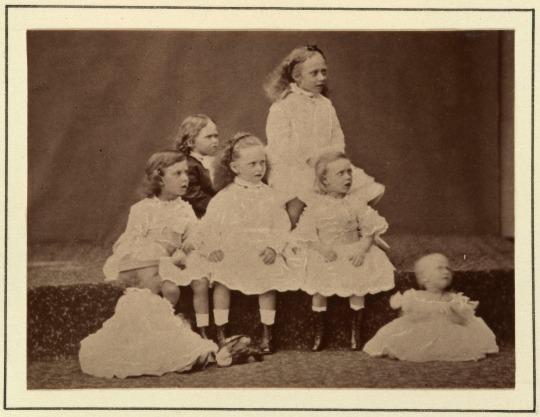



Queen Victoria's grandchildren 1868
Princess Victoria of Hesse, Princess Elizabeth of Hesse, Prince Albert Victor of Wales, Prince George of Wales, Princess Irene of Hesse, Princess Louise of Wales, Prince Christian Victor of Schleswig-Holstein.
Royal Collection Trust / © His Majesty King Charles III 2023
#victoria of hesse#elizabeth of hesse#prince albert victor#prince george#irene of hesse#princess louise#prince christian victor#king george v#victoria of battenberg#elizabeth feodorovna#1860s#queen victoria#british empire
19 notes
·
View notes
Text
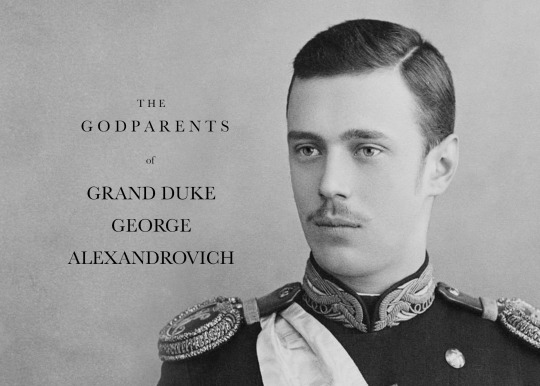
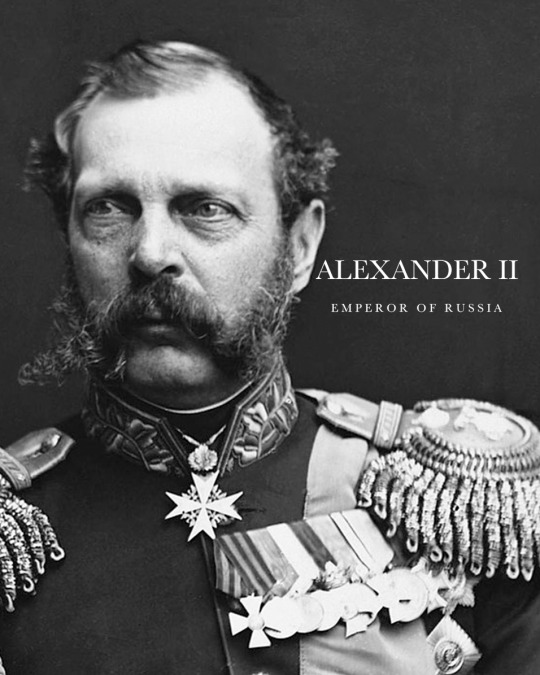
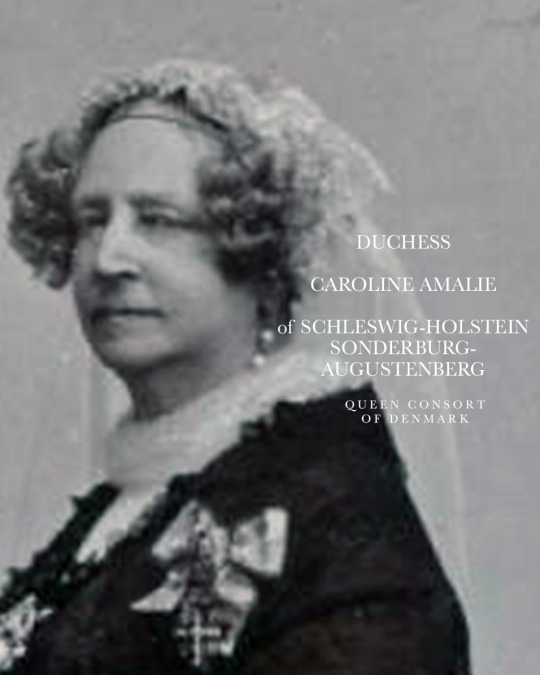

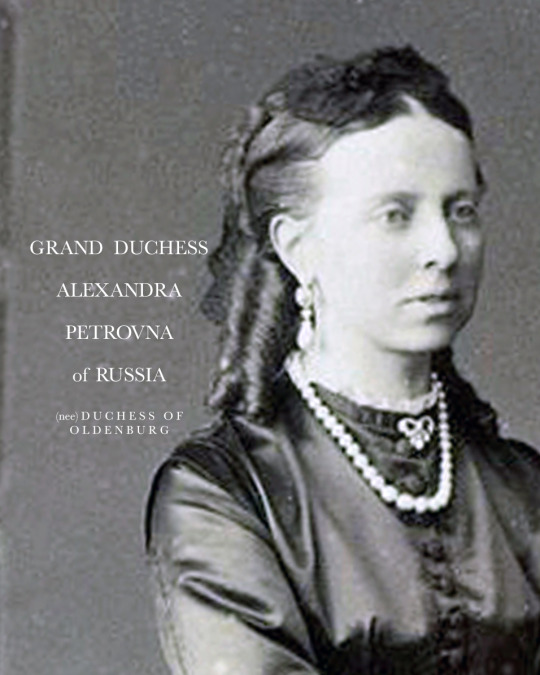
GODPARENTS OF GRAND DUKE GEORGE ALEXADROVICH
Grand Duke George Alexandrovich was born on 9 April 1871 in the Alexander Palace, Saint Petersburg in Tsarskoe Selo, Saint Petersburg. He was the third son of the Tsesarevich and Tsesarevna of Russia, later Emperor Alexander III and Empress Maria Feodorovna. He was christened on 29 May in Grand Palace Church, Tsarskoe Selo, by the Confessor of Their Imperial Majesties.
ALEXANDER II, EMPEROR OF RUSSIA - the Russian Emperor, his grandfather, was one of his godparents. He became the Emperor of All Russia in 1855. Alexander’s most significant reform as emperor was the emancipation of Russia’s serfs in 1861, for which he is known as Alexander the Liberator.
DUCHESS CAROLINE AMALIE OF SCHLESWIG-HOLSTEIN-SONDERBURG-AUGUSTENBURG, QUEEN CONSORT OF DENMARK - his great-great-aunt and the widow of King Christian VIII of Denmark, Queen Caroline Amalie was made a godmother of the Russian grand duke. Caroline Amalie was active within philanthropy, and was a popular figure in Denmark, even more so in widowhood.
KING GEORGE I OF GREECE - his namesake and uncle was listed as one of his godparents. Born a Danish prince, he was elected king by the Greek National Assembly, when he was only 17. His reign of almost 50 years (the longest in modern Greek history) was characterized by territorial gains as Greece established its place in pre–World War I Europe.
GRAND DUCHESS ALEXANDRA PETROVNA OF RUSSIA - George's paternal great-aunt, the wife of Grand Duke Nicholas Nikolaevich, was one of his godparents. A plain, and serious woman, her marriage to Grand Duke Nicholas was an unhappy one. Nevertheless, she would enjoy and maintain a good relationship with his nephew Emperor Alexander III and his wife, who were sympathetic to her.
Source
7 notes
·
View notes
Text
act four.

Romanov/Crown Prince later(Tsar)!Timothee Chalamet x Princess!Reader
main masterlist
let others wage war masterlist
act i,ii,iii
previous
summary: now engaged, you begin to prepare for the life that awaits you, while realizing and processing the loss of a sister to the same fate - marriage.
word count: 2.4k words
note: I know marriage is a common theme if not the main theme in this story, not only because of romance but because of how significant it was to women's lives. I wanted to tell their stories and what it would have been like to give up everything for love, for duty and your country.
not only did things have consequences on who you would marry, it would influence global politics and create a domino effect like no other especially for a royal dynasty like theirs. enjoy!
“Mere existence had always been too little for him; he had always wanted more."
Crime and Punishment (1866), Fyodor Dostoyevsky

"Do you think Alix is angry with me?" Minnie walks arm in arm with her statuesque father, strolling without rush in the lush green garden.
The smell of freshly watered grass stuck to their hems, as father and daughter enjoyed the whiffs of chilly autumn breeze brushing against their skin even under the cloudless sun.
As war waged on in your nation, the Second and Third Schleswig Wars waged on in Denmark and into the outskirts of Germany as the Schleswig-Holsteins threatened to steal at least two thirds of your country’s land mass. Seeing the tired, hollow shadows underneath your father’s eyes, you contain your anger and hatred for the Germans for what they had done to little, old Denmark.
They took advantage of your nation’s fledgling status, the political and constitutional uncertainty that came with succession crises. Leaving your dear Alix alone in the company of Germanophiles scares you, how she would be left alone and forced to renounce her country, her tongue, her identity for the man she is marrying and the country she will become queen to.
"She would never be angry with you, Minnie. Not for long, at least. "
"She hasn't talked to me, and we've started sleeping apart as I had to share a room with Thyra and she gets her own." You wonder inquisitively, tilting your head.
"Alix is to marry in less than a month, my pearl. This is the busiest time she will ever have in her life and no event will come that close to what she is about to overcome and prepare for." Christian explains sympathetically at his doe eyed daughter, understanding her innocuous reasoning that was still untainted by age and experience.
You stride around a rounded corner, feeling a brush of dried leaves falling from their branches.
"Well, have you taken the time to talk to her alone?"
"No?" Dagmar asks hesitantly, conflicted on whether she should have consulted her father on the matter at all.
"Then there lies the problem, my dear. It is life changing for a young woman to prepare to be legally wedded in matrimony. For any lady. What yet for our family? We had never been accustomed to such formalities, having been satisfied with next to nothing, but she is to give up her country and language for the man she loves, for her people, and for the great of all." He pinches her cheek adoringly, as she places her own soft hands against his bony, slender own against her cheeks.
Alexandra has always had so many words to say, even when it was best to say nothing, only when it came to you. She was ridiculously shy and nearly isolationist against others who were not in her intimate circle, yet if she had shut the gates to you- what else was there to do?
…
Under the ground floor staircase, a dark, shadowy room with bare candles that were overdue for replacement, barely cleaned by the meager maids you would have come in the palace, still covered in dust and cobwebs, yet this was the only time you could find time with her without any interruption.
As both of you snuck downstairs to retrieve some intricately hidden heirloom laces and few penchant jewelry to sneak in for Alexandra's regimented 'English' only wedding. Both with candlesticks in hand as you scourged through the bottom celar.
A glimpse of a smile appears on her graceful features when she recognizes a familiar portrait hidden underneath a scarlet velvet cloth.
“Minnie, do you remember the day we posed for this portrait? We barely knew how to pose for such things due to how costly they were to the household, but Papa managed to save half his yearly salary for this.” She longingly admires the portrait in front of her, lauding the coarse brushes of the oil painting, the lush colours in shades of pastels and creams.
Standing beside her apprehensively, you shift the weight between your feet restlessly, yet manage a bona fide chuckle at the joys and memories of your simple childhood, hours spent running in the grass, riding horses, picking flowers and playing with the worn out dolls you had shared in your attic in the Yellow Palace.
“Will we ever be like this again, Alix? This happy?” Dagmar asks hopefully, longing with a distant expression before looking down and releasing a long held sigh.
Alix reaches forward, holding your hands close to her chest as she envelopes your fingers in her bony palms. With a hushed urgency as her eyes bled into yours passionately, directly with such intensity you could not look away.
“I already know by the look in your eyes that you may assume that I have ignored you on purpose, that you have vexed me, upset me but it is nearly the opposite. I am fearful of the roads I am to approach alone, sister. Roads even you cannot follow and I am afraid you will no longer be by my side, because this is our fate.” In muted yet agonized whispers, her tears hit your hands under the shadows, as you nod along and sooth her before you reach forward with a tight embrace.
“Alix, you will always have my trust, my confidence. No matter how far apart we may be, you will always be my sister. You must promise to write to me as often as you can. You must swear on your life that no empires, no dynastic ambitions, no grand war plans will tear us apart.” Closing your eyes shut before you pull away from her arms, nodding along as you slightly tremble and catch a knot in your throat. Grasping at her fingers desperately like she’d fade away from you any second, you beg almost fearfully for her to silence your pleas, your worries, your fears.
“I promise.”
…
You enter the dressing room hand in hand, giggling and smiling coyly yet also sheepishly as if you were as high in the clouds in the sky. Hand in hand with your fiance, your future husband, the love of your life. Timothee. You can’t stop saying his name like a prayer, a furtive whisper, and the grin that blossoms on his handsome face is as beautiful as ever.
His mother the Tsarina awaits you both with a scarce yet open smile, her pearly white teeth on display as her prayers have been answered, seeing the woman she had wanted for her son happily betrothed to him.
“I cannot congratulate you both more than I already have. This is everything I have wanted and more. To see my son happily engaged to the woman he has loved for so long. I could die happy right now. “
“Mother, please stop saying that. You have so much longer to live, even with your illness.” He corrects his mother insistently, refusing outright at the thought of his dear mother passing anytime soon, or god forbid before he makes his way to the altar or even become Tsar of Imperial Russia.
Maria Alexandrovna approaches her dresser, covered in velvet and protected by a cloth she unravels, revealing a drawer full of diamonds, pearls, finest silks and furs, hitting the light of the late afternoon sun. You cannot help but gasp with a gawking, open mouth in shock in the splendour and elegance in front of you.
“As per tradition, a future Romanov bride is presented with gifts only deserving of a future Empress, a future Tsarina upon her betrothal.”
Timothee carefully picks up a set of diamonds on the upper corner of the oak table, carrying them in his hands cautiously as he looks up in excitement to see your reaction.
“A Romanov groom grants his future bride these diamonds, as we have for the past two hundred years. Yet as Tsesarevich, I give you these heirlooms that have been set aside for this occasion long before my birth. These diamonds come from the parure set of Empress Catherine the Great, deep in her jewelry vault and from the Ural Mountains.” He presents them to you proudly underneath lush velvet to protect the fine jewels in front of you, that you inquisitively touch with your hands to feel them against your warm skin, cold to the touch.
“These are too much. You cannot expect me to accept such gifts.” You shake your head but both mother and son insist.
“You must take them, my dear. This is only a glimpse of what you deserve, of what you are entering. The world you will become part of. This is only the beginning.”
What your eyes are glued to are, however, a string of the finest sea pearls presented in a blue velvet necklace box, that both Timothee and his mother move towards.
“If the diamonds are from your future husband, I, as your future mother-in-law, as Tsarina to her successor, every Romanov bride is presented with this pearl necklace. That you are to give to your future son’s future wife and furthermore.” Your cheeks warm up at the mention of any future children, or your hypothetical children marrying, but you know it is an eventual event you are expecting sooner than later.
You feel Timothee’s warmth behind you, his arms on either side of you as he places the pearl necklace in front of your neck, brushing his coarse fingers against your nape as he scrupulously clasps it shut.
In your low, trimmed off the shoulder dress, the cold of the pearl hit against your warm skin, and his velvety touch gave you goosebumps along your arms. As he looks into the mirror on how it shines against your skin, you feel the warmth of his breath against your clavicle, and nearly feel the ghost of his lips so close yet so far to your neck. You nearly feel himself gasp in admiration as his eyes darken, pupils dilated in your image yet he restrains himself, especially as his mother was in the audience.
Seeing yourself stand so naturally with those pearls like they were created and stringed with you in mind, you take a deep breath as you take upon the future life you are meant to live. You are no longer approaching it step by step, but at full speed ahead.
An unfamiliar longing washes over you, uncontrollable and a primal urge you are a stranger too but you want to dive deep into this warmth, this longing, this lust you have for your future husband.
“One more thing.” You drag him along with you as he willingly trails behind you with a confused, yet amused expression, his chuckles filling the halls.
Standing in front of the glass window, gilded with gold around, its immaculate, cold touch to the feeling is engraved with scribbles and signatures of past lovers in the Danish royal family before they were to wed.
Taking the diamond he gave you from your pocket, you etch the sharp bottom of the triangular shaped stone against the window, scarifying your name among the many others as it stands out as the fresh incision.
“W-What are you doing, Minnie?”
“Here we will immaculate our love, our union so that it may stand the test of time. The Danish tradition here in the palace is that spouses to be, lovers, are to engrave their name on this window, so that future generations may remember that we were once here, fully in love.”
You smile at him with hearts in your eyes, taking his larger, coarse hands in yours, pressing his fingertips gently before you place the diamond he has given you back to him.
Chuckling lightheartedly, Timothee engraved his name beside yours, immortalizing your love and future union forever.
…
“Do you have to leave so soon?” Minnie aimlessly watches Timothee gather the last of his belongings, accompanied by his chief of staff and a swad of butlers and maids at his beck and call. Holding the indigo hued fine scarf close to her chest, she feels the chills of the upcoming autumn approaching, especially by the coastal city of Copenhagen.
Everyone is frantic and unnerved, yet even among the sea of worry and scrambling, he is an oasis of calm and ease as he makes his way to the carriage, warmly dressed in his fine velvet cot, a dark scarlet bow his newly minted fiance had chosen and put on for him.
As he comforts your worries with his warm hands in your cold, gloved own, he looks into your eyes with a loving softness he only reserves for you.
“Minnie, as much as this pains me- I have to complete my duties and complete another tour before I return to Saint Petersburg. "
You are a stranger to the odd feeling you never got used to. This anxiety, this yearning for him that never went away, that if you spent any moment away from him would make you spiral into insanity. In the days leading up to his departure, you spent restless nights tossing and turning in your mattress, sweaty sheets sticking to your skin as you feared the inevitable.
Despite how he could be his most scornful critic, Timothee always knew his duty. No matter how much he would hesitate and think he would never do enough, he would give more than enough, giving himself entirely for his nation, his country.
"Yes, yes, but can you not delay it until the beginning of autumn-"
He cuts you off with a gentle palm cupping your cheeks, wiping the tears beginning to fall from your eyes.
"I have delayed this long enough, my dove. My brothers and my mother have been long gone while I have still lingered here, spending every waking second with you, but I must leave now. If only you knew how much it pains me that we shall be apart, but the sooner I leave, the sooner we will meet in Saint Petersburg at last."
Timothee leans forward for a passionate yet still proper kiss, his warm lips sucking in your upper lip, tongue slightly exploring into your cavern, before he pulls away with pained longing.
"Promise you will write to me daily, Tim?"
As he boards his carriage and its hinged door is shut by his servants, he pulls down its window.
"Every day, I will not miss a single one, my love. Every day."
You tearily watch his carriage and his surrounding escorts depart from the cobblestone area, iron gates swung open as the fine stallions depart for a long, landlocked voyage across the peninsula.
What he has awoken you is a complete stranger to what you have experienced in your short life, yet it excites you and you only long to become acquainted with this sensation.
…
#timothee chalamet imagines#timothee chalamet x reader#timothee chalamet scenarios#timothee chalamet
71 notes
·
View notes
Text
The Family <3


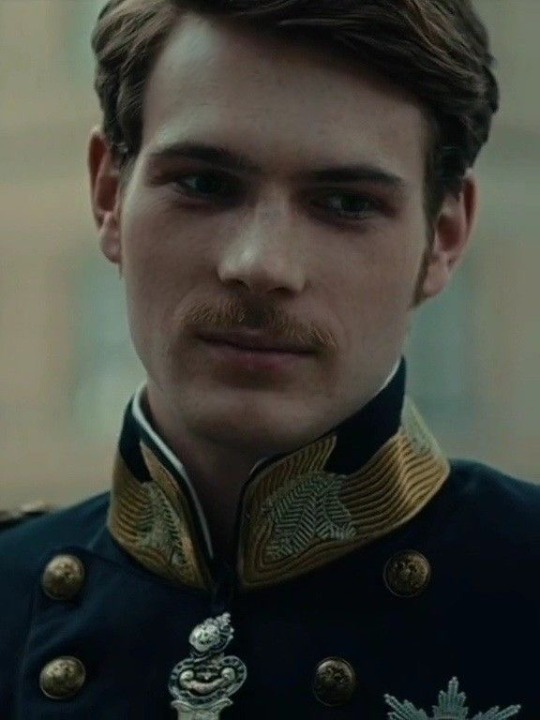

emperor Franz Joseph Of Austria And King Of Hungary (1816-1905)
age: 35
height: 6’4
birthday: 18th august
early life:
Franz Joseph was born on 18 August 1816 in the Schönbrunn Palace in Vienna (on the 65th anniversary of the death of Francis of Lorraine) as the eldest son of Archduke Franz Karl (the younger son of Francis I), and his wife Sophie, Princess of Bavaria. Because his uncle, reigning from 1835 as the Emperor Ferdinand, was disabled by seizures, and his father unambitious and retiring, the mother of the young Archduke "Franzi" brought him up as a future emperor, with emphasis on devotion, responsibility and diligence.

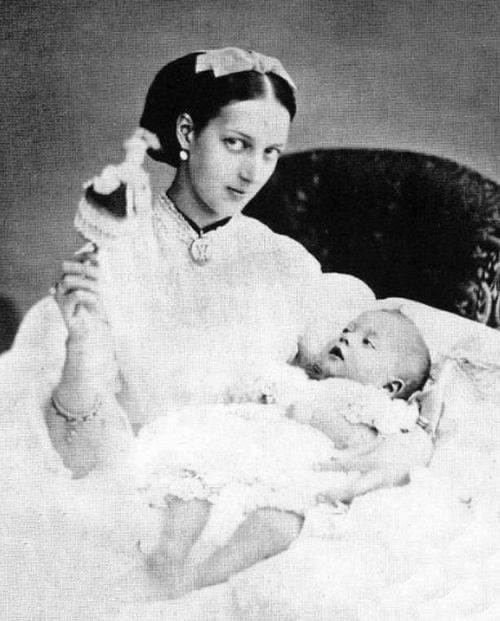
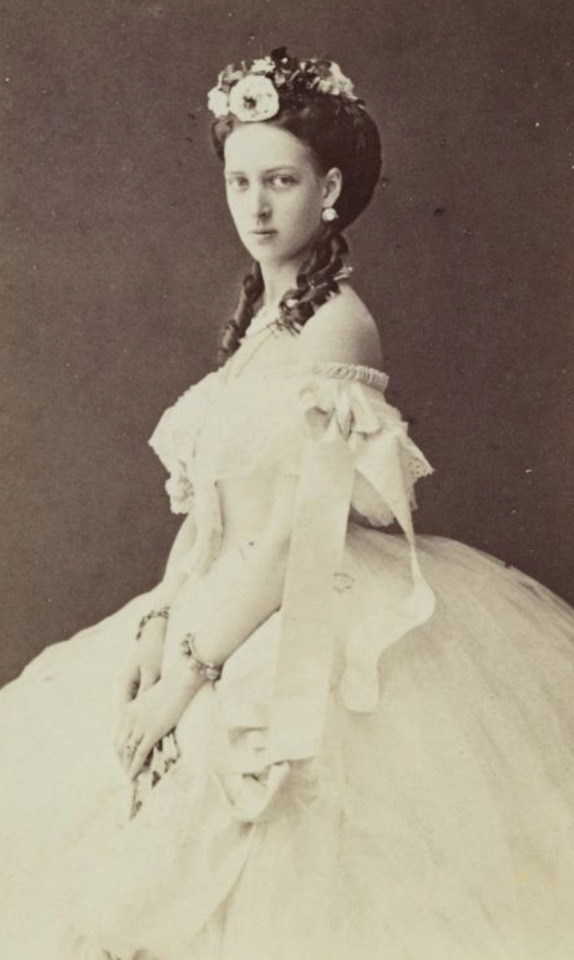
Empress Alexandra Of Austria, Queen Of Hungary (1816-1907)
age: 35
height: 5’10
birthday: 8th March
Early Life:
Princess Alexandra Caroline Marie Charlotte Louise Julia, or "Alix", as her immediate family knew her, was born at the Yellow Palace, an 18th-century town house at 18 Amaliegade, immediately adjacent to the Amalienborg Palacecomplex in Copenhagen.[1] Her father was Prince Christian of Schleswig-Holstein-Sonderburg-Glücksburg and her mother was Princess Louise of Hesse-Kassel.[2] She had five siblings: Frederick, William (later George I of Greece), Dagmar (later Empress of Russia), Thyra and Valdemar.
Her father's family was a distant cadet branch of the Danish royal House of Oldenburg, which was descended from King Christian III. Although they were of royal blood,[a] the family lived a comparatively modest life. They did not possess great wealth; her father's income from an army commission was about £800 per year and their house was a rent-free grace and favour property. Occasionally, Hans Christian Andersen was invited to call and tell the children stories before bedtime.

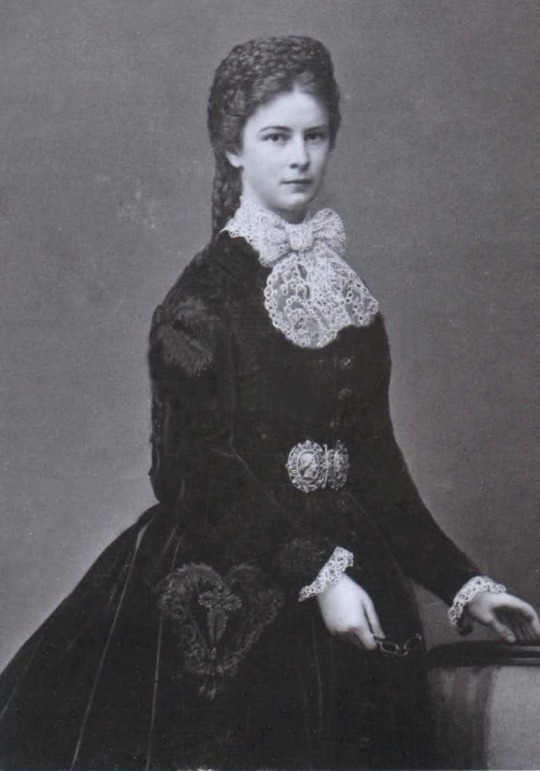

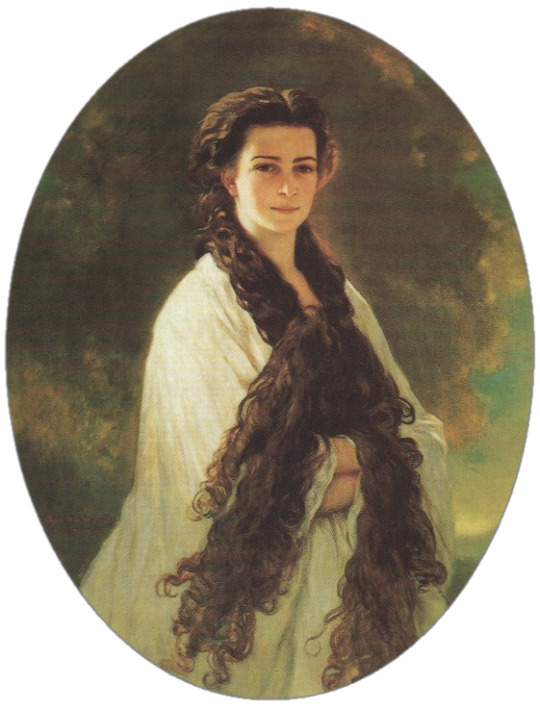

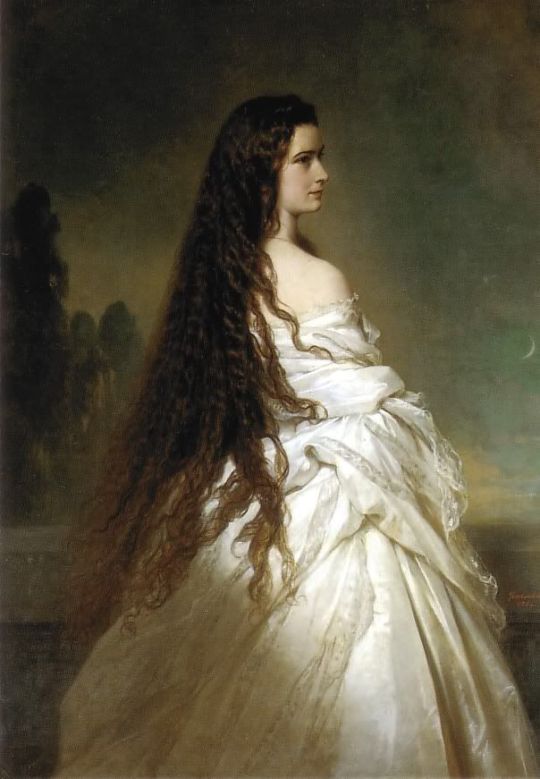
GrandDuchess Elisabeth Of Austria, Later Empress Of Austria And Queen Of Hungary at 19 Years old (1837-1927)
age: 14-15
height: 5’8
birthday: 24th December

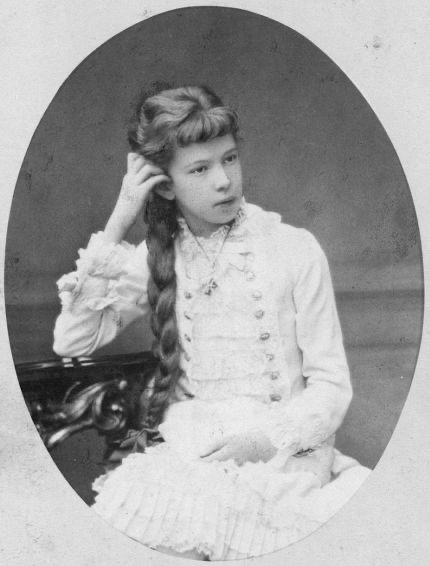
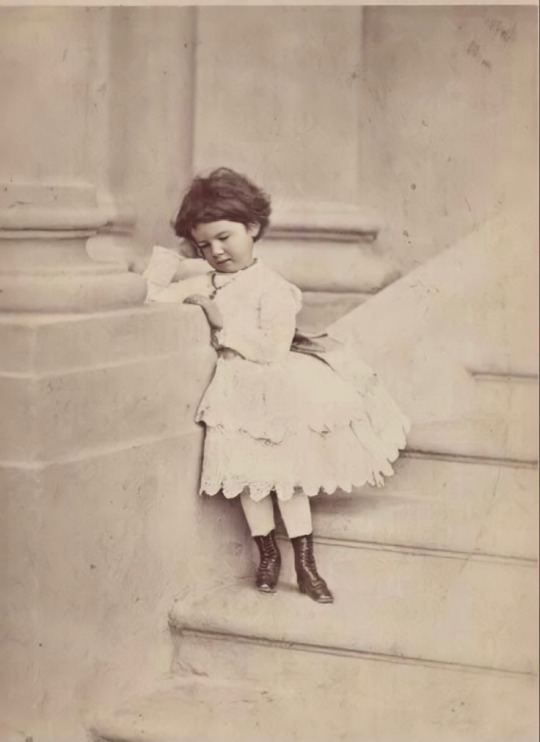
Marie Valerie (1840-1943) lmao Valerie lived a long time
Height: 5’3
age: 10
birthday: 24th april
5 notes
·
View notes
Note
Lambrook School for the Cambridge kiddos (3-13) !!
The school was founded in 1860 by Robert Burnside, in a large country house built in 1853 by William Budd. Burnside initially employed only one master, and by 1879 there were twenty one boys, including two grandsons of Queen Victoria, Albert, Duke of Schleswig-Holstein and Prince Christian Victor of Schleswig-Holstein. Run as a traditional boys' boarding school, Lambrook accepted only male pupils between the ages of 7 and 13 until 1993.
The school has 52 acres (210,000 m2) of grounds and playing fields, which includes a 25m indoor swimming pool, Orchard, Astroturf, netball courts, Chapel, Art and Design and Technology studios, Performing Arts Centre, Dance Studio, Sports Hall, and a 9-hole golf course.
Lambrook caters for both day pupils and flexible boarding pupils. Lambrook offers weekly and flexi-boarding from age 7 (Year 3). There is a thriving boarding community where pupils can board five nights a week or one night every so often, and every permutation in between. There are two boarding houses, Lambrook House for girls and Westfield for boys. Each house is overseen by a house parent and supported by tutors.
There are many Co-Curricular opportunities for pupils to continue to complement their academic studies in areas including, Farming, Bee Keeping, Chess, Fencing, Judo, Film Making, Squash, Scuba Diving, Song writing, Charity and Eco initiatives, Mini Masterchef, Ballet, Tap, Jazz, Golf, Polo, Podcast making, Sewing, Skiing, Swimming, Tennis, Life Saving, Survival, Debating and Public Speaking.
Notable former pupils;
Prince Christian Victor of Schleswig-Holstein, grandson of Queen Victoria and British Army officer who died during the Boer War
Prince Albert of Schleswig-Holstein, grandson of Queen Victoria and Prussian army officer
Sounds like a lovely school, I hope the Cambridge kids are able to thrive there. Not to mention be away from the many prying eyes in London, the older they get, the more their security risk increases.
25 notes
·
View notes
Text

Henry ‘Chips’ Channon: The Diaries (Vol. 1), 1918-38, entry for 30th April 1923
—
Dined at Claridge’s with Lord and Lady Curzon before the great charity ball she organised at Lansdowne House, which made £10,000 for hospitals and starting the season. The Prince of Wales very charming, Prince George pink, with his ‘just-spanked look’, Princess Helena Victoria,¹ Princess Patricia² and her husband Ramsay and others at dinner. The never-so-crowded restaurant rose like an army and remained standing until we were seated at a table at the far end of the room. After the ladies left the Prince of Wales and Lord Curzon had an animated, friendly conversation about the House of Lords. The ‘hush’ party of the other evening was not mentioned . . . although five of us at the dinner had participated.
—
1. Victoria Louise Sophia Augusta Amelia Helena (1870-1948), Princess Helena Victoria, daughter of Prince Christian of Schleswig-Holstein and Princess Helena, third daughter of Queen Victoria; she was therefore the King’s cousin.
2. Princess Victoria Patricia Helena Elizabeth (1886-1974), known as ‘Princess Pat’, daughter of Prince Arthur, Duke of Connaught, third son of Queen Victoria; therefore she was the King’s cousin. She married in 1919 Commander Alexander Ramsay (1881-1972), third son of the Earl of Dalhousie, aide-de-camp to her father, on which occasion she relinquished the style and title of Royal Highness and Princess and as the daughter of a duke became styled as Lady Patricia Ramsay.
#chips channon#channon diaries#1923#1920s#george curzon#grace curzon#edward viii#prince george duke of kent#princess helena victoria#patricia ramsay#alexander ramsay#claridge's#lansdowne house#🕰️
3 notes
·
View notes
Photo
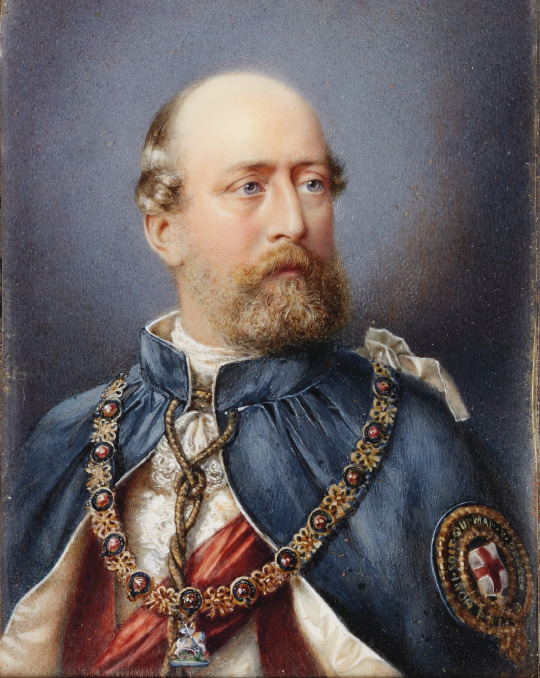
Prince Christian of Schleswig-Holstein (1831-1917), wearing the robes of the Order of the Garter. By William Thompson Barber.
Prince Frederick Christian Charles Augustus of Schleswig-Holstein (1831–1917) was a Danish-born German prince who became a member of the British royal family through his marriage to Princess Helena of the United Kingdom, the fifth child and third daughter of Queen Victoria and Prince Albert of Saxe-Coburg-Gotha.
#William Thompson Barber#uk#house of schleswig-holstein#german aristocracy#british aristocracy#haus oldenburg#slesvig holsten sønderborg augustenborg#prince christian of schleswig holstein
6 notes
·
View notes
Text
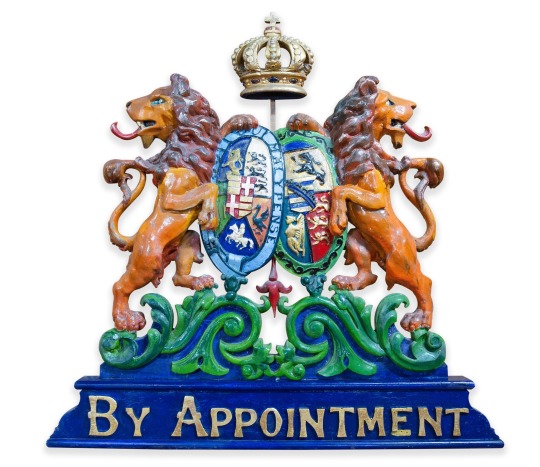
An early 20th century carved wood and polychrome painted armorial warrant
Crest shop sign bearing the arms of Prince Christian of
Schleswig-Holstein-Sonderburg-Augustenburg (1831-1917)
Bonhams
3 notes
·
View notes